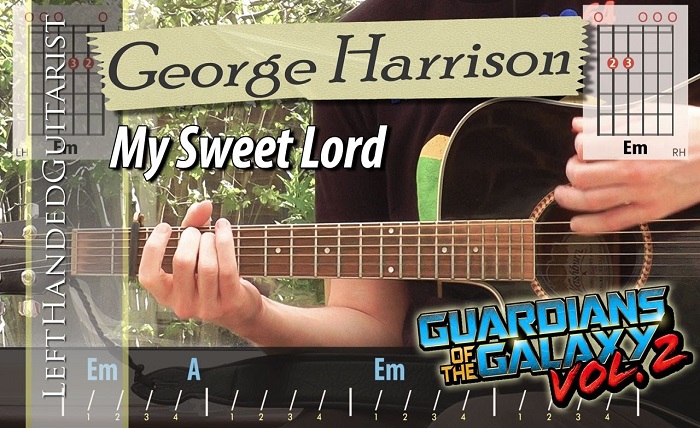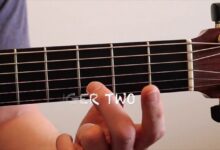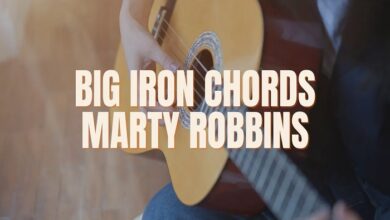How to Play My Sweet Lord by George Harrison Chord on Guitar

In this article, I will show you how to play My Sweet Lord on guitar using chords, strumming patterns, and capo. I will also provide some tips and tricks to make your playing sound more authentic and enjoyable.
Chords
The song uses a variety of chords, some of which are not very common. Here is a list of the chords you will need to play My Sweet Lord, along with their diagrams and fingerings:
[Intro] Em A Em A Em A Em A D Bm D Bm D F#dim B7 Em [Chorus] A Em My sweet lord A Em Hm, my lord A Em Hm, my lord [Verse] A D I really want to see you Bm D Really want to be with you Bm D Really want to see you lord F#dim B7 Em But it takes so long, my lord [Chorus] A Em My sweet lord A Em Hm, my lord A Em Hm, my lord [Verse] A D I really want to know you Bm D Really want to go with you Bm D Really want to show you lord F#dim B7 Em A That it won't take long, my lord (hallelujah) [Chorus] Em A My sweet lord (hallelujah) Em A Hm, my lord (hallelujah) Em A My sweet lord (hallelujah) [Verse] D I really want to see you D7 Really want to see you B7 Really want to see you, lord E Really want to see you, lord G#dim C#7 F#m B But it takes so long, my lord (hallelujah) [Chorus] F#m B My sweet lord (hallelujah) F#m B Hm, my lord (hallelujah) F#m B My, my, my lord (hallelujah) [Verse] E C#m I really want to know you (hallelujah) E C#m Really want to go with you (hallelujah) E Really want to show you lord (aaah) G#dim C#7 F#m B That it won't take long, my lord (hallelujah) [Chorus] F#m B Hmm (hallelujah) F#m B My sweet lord (hallelujah) F#m B My, my, lord (hallelujah) [Instrumental] E C#m E C#m E G#dim C#7 F#m B [Chorus] F#m B Hm, my lord (hare krishna) F#m B My, my, my lord (hare krishna) F#m B Oh hm, my sweet lord (krishna, krishna) F#m B Oh-uuh-uh (hare hare) [Verse] E C#m Now, I really want to see you (hare rama) E C#m Really want to be with you (hare rama) E Really want to see you lord (aaah) G#dim C#7 F#m B But it takes so long, my lord (hallelujah) [Chorus] F#m B Hm, my lord (hallelujah) F#m B My, my, my lord (hare krishna) F#m B My sweet lord (hare krishna) F#m B My sweet lord (krishna krishna) F#m B My lord (hare hare) F#m B Hm, Hm (Gurur Brahma) F#m B Hm, Hm (Gurur Vishnu) F#m B Hm, Hm (Gurur Devo) F#m B Hm, Hm (Maheshwara) F#m B My sweet lord (Gurur Sakshaat) F#m B My sweet lord (Parabrahma) F#m B My, my, my lord (Tasmayi Shree) F#m B My, my, my, my lord (Guruve Namah) F#m B My sweet lord (Hare Rama) F#m B (hare krishna) F#m B My sweet lord (hare krishna) F#m B My sweet lord (krishna krishna) F#m B My lord (hare hare)
Capo
The song is played with a capo on the second fret. This means that the chords are transposed up by two semitones, and the chord names are relative to the capo position. For example, when you play an Em chord with the capo on the second fret, it actually sounds like an F#m chord.
Using a capo makes the song easier to play, as it avoids some difficult barre chords and allows you to use more open strings. It also matches the original key of the song, which is F# minor.
Strumming Pattern
The song has a simple and steady strumming pattern that consists of four downstrokes per measure. You can accentuate the first and third beats to create some groove and dynamics. Here is an example of how to strum the Em chord:
1 2 3 4
D D D D
Em
You can apply this strumming pattern to all the chords in the song, except for the D7 and C#7 chords, which are played with only one downstroke each.
Song Structure
The song has a basic structure that repeats throughout. It consists of four sections: chorus, verse, bridge, and outro. Here is a summary of the structure, along with the chord progressions for each section:
- Chorus: Em A Em A Em A Em A D Bm D Bm D F#dim B7 Em
- Verse: A D Bm D Bm D F#dim B7 Em A Em A Em A Em A Em A
- Bridge: D D7 B7 E G#dim C#7 F#m B F#m B F#m B E C#m E C#m E G#dim C#7 F#m B
- Outro: F#m B F#m B F#m B E C#m E C#m E C#m F#m B
Read more about mitsuri.net
Here are some tips and tricks to make your playing sound more authentic and enjoyable:
- You can add some embellishments to the chords by lifting or adding fingers on certain strings. For example, you can lift your index finger from the A chord to create an Asus2 chord, or add your pinky finger to the high E string on the Em chord to create an Em7 chord. Experiment with different variations and see what sounds good to you.
- You can also use some hammer-ons and pull-offs to create some melodic movement between the chords. For example, you can hammer-on your middle finger from the open G string to the second fret on the D chord, or pull-off your ring finger from the third fret to the open B string on the G#dim chord. These techniques add some flavor and interest to your playing.
- You can sing along with the song or hum the melody as you play. This will help you develop your ear and your sense of rhythm. You can also try to imitate the vocal harmonies or the guitar solos that are present in the original recording.
- You can play along with the song or a backing track to practice your timing and your chord changes. You can find the song on YouTube or a backing track on [GuitarBackingTrack].
Conclusion
My Sweet Lord is a beautiful and inspiring song by George Harrison that you can learn to play on guitar. It uses a variety of chords, some of which are not very common, but it also has a simple and steady strumming pattern that makes it easy to follow. The song has a basic structure that repeats throughout, and it features a blend of rock, folk, and gospel music. You can add some embellishments, hammer-ons, pull-offs, and vocals to make your playing sound more authentic and enjoyable. You can also play along with the song or a backing track to practice your timing and your chord changes. I hope you enjoyed this article and learned something new. Happy playing!







